|
|
Post by jrfxtreme on Jul 31, 2007 17:38:16 GMT
Heres some pics comparing the seeds of the white flower and pink flower indica (taken on graph paper with 1/4" (6mm) squares): White flower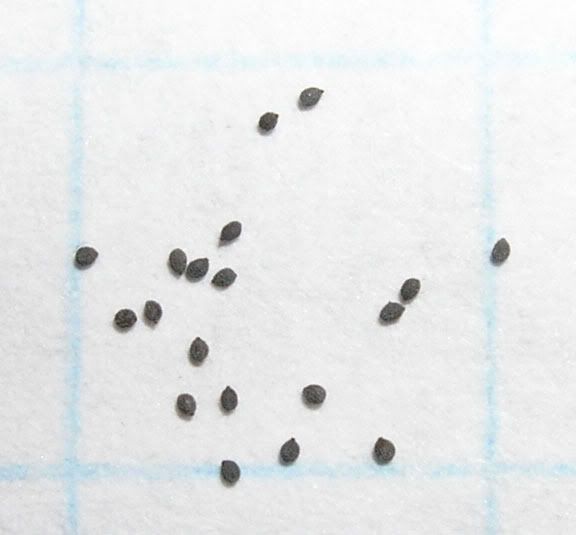 Pink flower Pink flower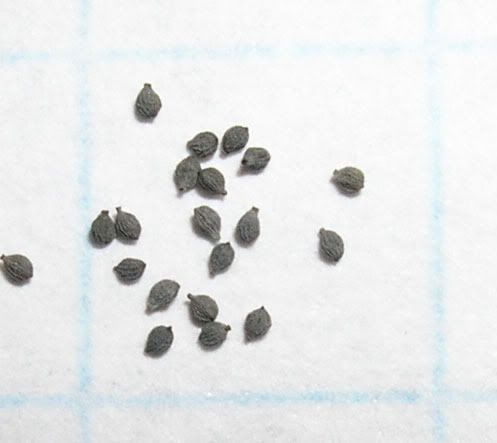 After sending up 2 flower stalks and setting seed, the pink flowered indica is still going strong and has begun sending up 2 more stalks. It has leaned over and in response sent out an offshoot from the middle of the stem and roots along the bottom of the stem: 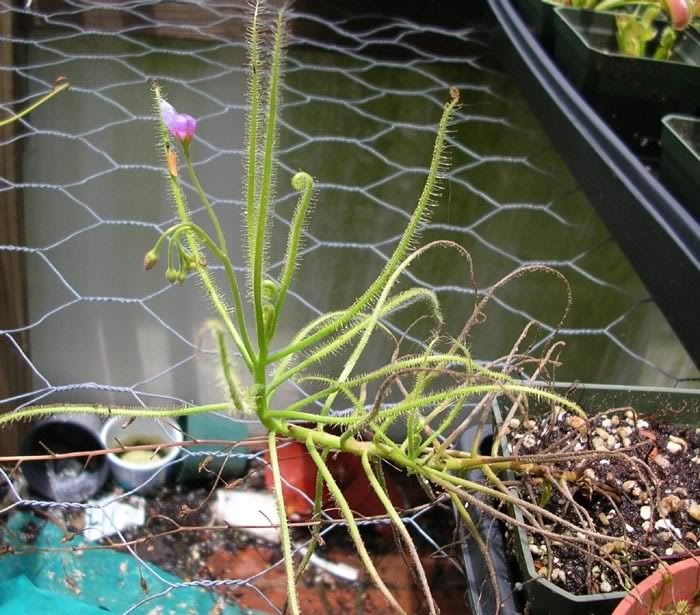 Bad close up of the offshoot: 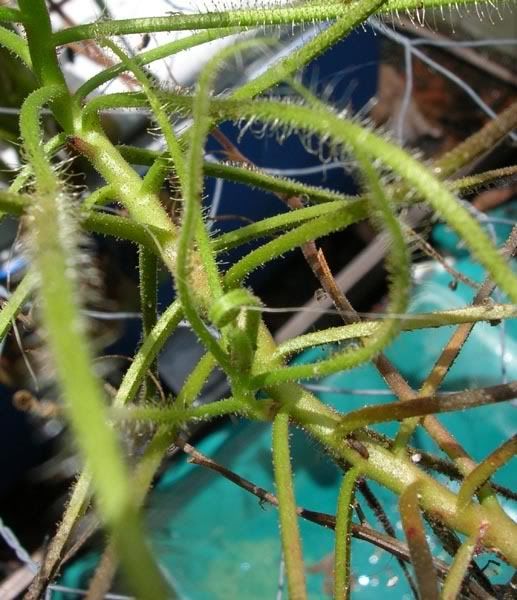 Roots: 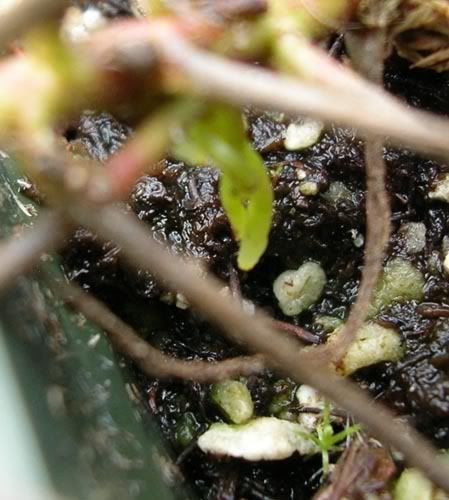 Bud detail Bud detail |
|
|
|
Post by shartmeyer on Aug 7, 2007 16:12:35 GMT
Thank you for sharing these photos jrfxtreme, would you give me the permission to show them at our homepage (including your name) too?
Thinking about the reason (attraction or deterrence) for these red emergences (contrasting on green leaves!), it is eye-catching that all of them are found surrounded by small glue-tentacles over the whole lower side of leaves and petals. Obviously produced for the eyes of anything looking from below the plant.
This looks like an opposite strategy compared with D. hartmeyerorum, which develops the bright yellow lens- tentacles (contrasting on dark red leaves) on the upper side of the leaves (only at the plant center) and on dark red bracts at a glabrous florescence, obviously to be attractive to the eyes of animals (we guess baby-grasshoppers) which look at the plant from above.
Both plants have sickle-shaped bracts, but the yellow emergences are on the upper side, the red ones appear only on the lower side. The plants are certainly related members of section Arachnopus, but developed clearly different strategies to survive as annuals.
|
|
|
|
Post by jrfxtreme on Aug 9, 2007 4:43:43 GMT
Thank you for sharing these photos jrfxtreme, would you give me the permission to show them at our homepage (including your name) too? Sure, feel free to use whatever pics you'd like. |
|
|
|
Post by BarryRice on Aug 14, 2007 17:38:20 GMT
Hey Seanspence,
I think it is useful to remember that Jan's list's strength is that it is a compendium of published named, and that Jan has gone through the trouble of noting which species are correctly named, which have priority, etc.
HOWEVER, it is important to remember that Jan is not an official registrar of what we must believe in terms of species. Whether Jan considers a couple of entities to be separated at a species level or not, is nonbinding in terms of scientific thought.
I respect Jan enormously, and when I constructed my own species lists I started with Jan's list as my basis. Then, however, I modified them based upon my own field work and opinions, and the opinions of other scientists.
Regarding the possible separation of D. peltata and D. auriculata at the species or subspecies level, I would weigh most strongly the opinions of Robert Gibson; I'll defer further comment until his dissertation is published.
As for Drosera indica, I tend to side with Siggi. I suspect that this plant---which has a large range in Africa, Asia, and Australia---will long frustrate our attempts at classifications. However, I won't at all be surprised if experts in the field decide that this species should be divided into separate species.
But will you agree with these "experts"? That is your decision, and not someone else's.
Barry
|
|
|
|
Post by John Brittnacher on Aug 15, 2007 4:34:22 GMT
I would like to second what Barry posted... With respect to Jan's database, the version on the ICPS web site www.carnivorousplants.org/cpdb/SearchCPdb.phphas a disclaimer effectively stating the status of any given name is Jan's view of reality and that reality may not be yours. Jan is completely supportive of the statement although I didn't word it as strongly on our official web page. You will note I give the example of Drosera anglica where I think he is being a little too enthusiastic applying the rules of taxonomy. As far as D. auriculata and D. peltata and their listings on the ICPS Seed Bank, that is Barry's fault. When I saw D. peltata subsp. auriculata in his book I went storming into his office and wanted to know what that was about. He said talk to Robert Gibson. So I did and Robert's response was that the D. peltata story is much more interesting than just D. auriculata and D. peltata. Until it is published he didn't want to say too much but he did say Robert spent years studying the D. peltata species group and it is no where near as complicated as the D. indica species group. Real life on this planet is much more complicated and interesting than can be fit into the little boxes used in taxonomy. I think most taxonomists know that but also realize any relaxation of the rules will result in the chaos that is real life. I look forward to seeing more pictures of variation in the D. indica species group. I would also like to update the page at www.carnivorousplants.org/seedbank/species/D_indica.htmbut have very little experience with these species. If someone would like to work on a new version of the page, please contact me via my carnivorousplants.org e-mail address. |
|
|
|
Post by BarryRice on Aug 15, 2007 21:34:21 GMT
As far as D. auriculata and D. peltata and their listings on the ICPS Seed Bank, that is Barry's fault. When I saw D. peltata subsp. auriculata in his book I went storming into his office and wanted to know what that was about. He said talk to Robert Gibson. So I did and Robert's response was that the D. peltata story is much more interesting than just D. auriculata and D. peltata. Until it is published he didn't want to say too much but he did say And Hell Hath no fury like a seedbank manager.... I just don't know what to do with these plants. In my book I have them listed as merely subspecies, on my web site I have them listed as separate species. Somebody hit me! |
|
|
|
Post by shartmeyer on Aug 30, 2007 10:59:06 GMT
Jeremy, thank you very much for your permission to use your photos. I added them to our microscope page ( www.hartmeyer.de/USB_Mikroskop_GB.htm) where also other emergences of section Arachnopus are shown. |
|
|
|
Post by BarryRice on Sept 14, 2007 17:30:14 GMT
As a result, other people now don't feel like naming species, at least not through the CPN because they are under the impression that Jan will "steal them" if they submit research to the ICPS. What I have seen is Jan Schlauer is extremely even handed and completely professional.  This idea that if Jan says "this" about somesuch plant so then I must say "that" about some other plant; appears to me to be an extension of this flawed idea about how Jan and the ICPS works. I don't know how many people feel this way about the ICPS, but I have heard this from several different folks over the years and it has really been annoying me for a while... I never saw any way to address it and I hope mentioning it here and now will finally help clear the air. Whoah, whoah, whoah. Now just hold on for a moment here! Somehow I overlooked this message from Dave Evans, from 25 July. This is a very, very serious statement. I've been coeditor of Carnivorous Plant Newsletter since 1997, and I think that Jan was a coeditor for perhaps one or two issues before I was asked to join. During the entire time I have been coeditor, I have never seen anything, in any form, that would make me accuse Jan of this extremely serious charge. Again, let me repeat. Jan does not steal science. I will fully allow that Jan has some strongly held opinions that he will defend vigorously and firmly, however, his scientific ethics are beyond reproach. I have seen Jan, over and over, selflessly provide assistance to other scientists with their papers. For example, he has provided Latin text, or corrections to Latin, to many of our new taxa descriptions. I know that Jan has disputed the treatments of some taxonomic descriptions---such as assigning entities to the varietal level where others called them subspecies---but this is not at all unethical. Also, the law of science is that publication priority is given by publication date. Those who have new discoveries must publish their results in a timely way. It burns to be "scooped" by another researcher (as I have been!), but such is life. If you have a discovery you wish to publish upon, you should be careful about publicizing the work before it is published. Rant over, I've got to get to work. Barry P.S. I should point out this rant is not directed at Dave, as he didn't make the allegations. I thank him for bringing them to my attention. B |
|







